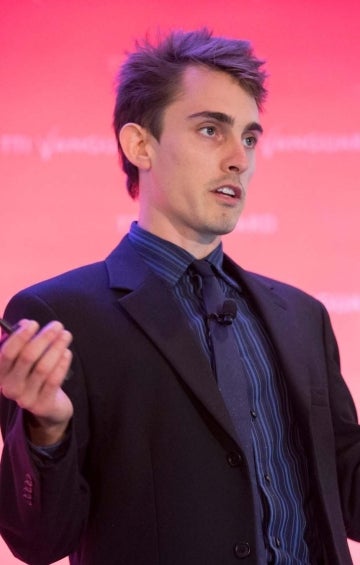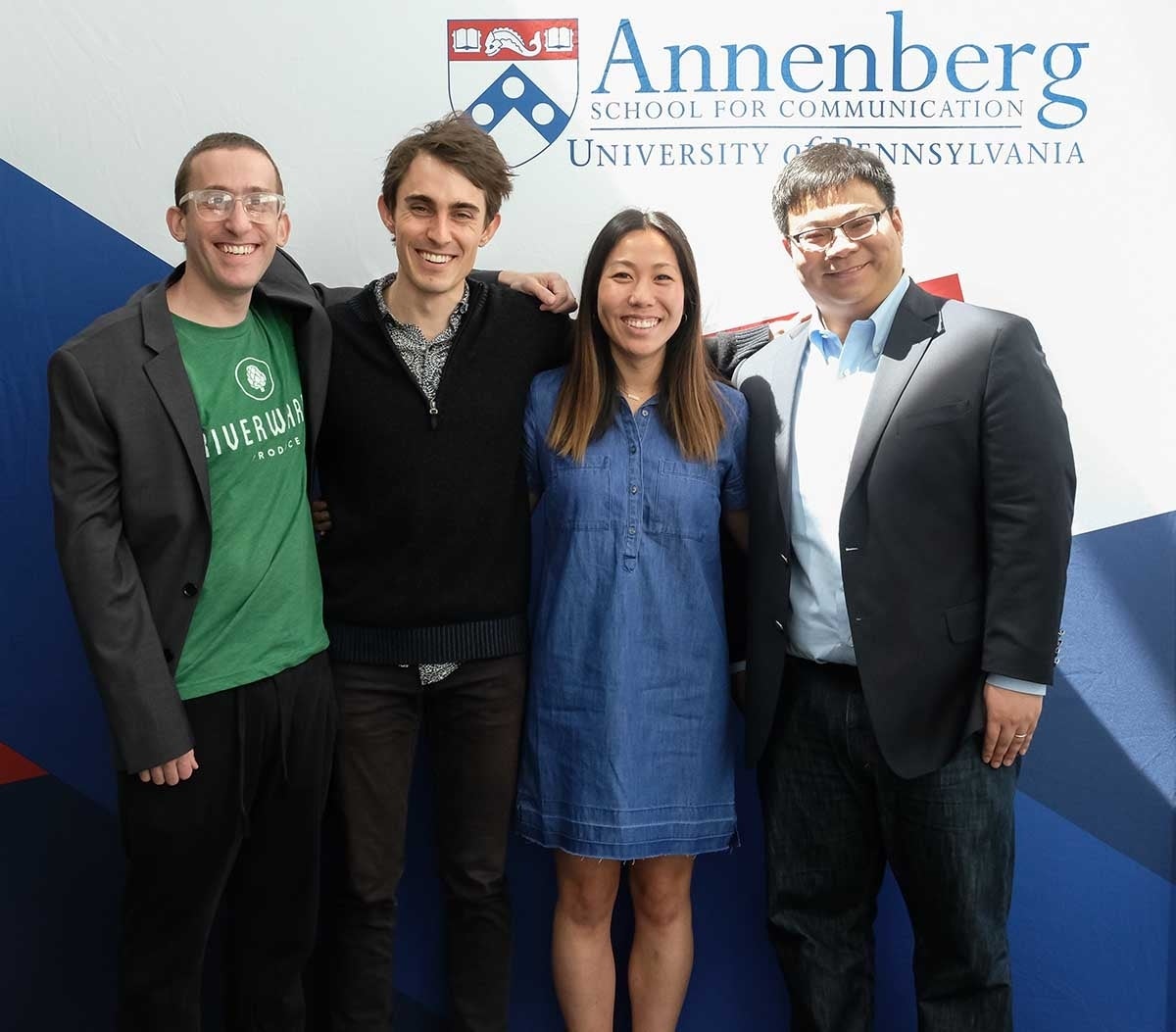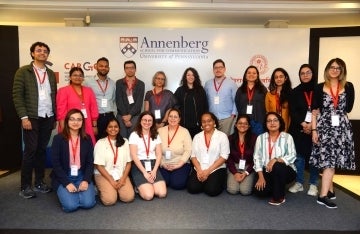What Do Bots, Climate Change, and Academic Grants Have in Common?
Doctoral student Douglas Guilbeault points to the importance of categories.

We know that “sex sells,” but can a dating app be manipulated to influence votes? It almost sounds too silly to be true, but leading up to last year’s general election in the United Kingdom, a network of bots used Tinder to influence the outcome.
Writing in Wired, Doctoral Student Douglas Guilbeault and research partner Robert Gorwa exposed the scam: Taking over real users’ accounts, the bots masqueraded as hopeful daters. Mingling flirtatious chatter with discussions of political policy, the bots endeavored to convince actual Tinder users to vote for Jeremy Corbyn instead of Theresa May. In some cases, it actually worked.
Over the last several years, bots have been regularly making headlines, exposed for posing as ordinary people in an effort to meddle in elections, harass social media users, steal personal information, and influence public opinion on behalf of governments and corporations. In The Atlantic, Guilbeault and Samuel Woolley told the story of how bots were being used to influence the 2016 U.S. presidential election.
Bots have become a source of great public anxiety, but Guilbeault points out a fundamental problem: most people don’t understand what a bot is.

In a recently published paper in Policy & Internet, which won a top student paper award from the International Communication Association, Guilbeault breaks down the six main types of automated technology that are sometimes called bots, and he argues that lumping them all together makes for confusing conversations, convoluted research results, and bad policy.
Some bots are genuinely malicious, like spambots that corrupt computers and use them to send billions of spam emails per day. But others are actually helpful, like web crawlers that enable search engines to compile a list of webpages related to your search terms, or automated Twitter accounts that post all major earthquakes as they happen.
“A lot of the policy issues surrounding bots stem from the fact that no one’s really clear what they mean when we’re talking about bots,” he says. “We can’t regulate them properly if we don’t distinguish between them.”
In fact, distinguishing between things — assigning categories and names to things — is one of Guilbeault’s main research interests, building on his background in linguistics and cognitive science. Now a fourth year doctoral student at the Annenberg School, he’s not only a budding bot expert, but he’s also applying his understanding of how categories are defined to the study of political communication.
He currently is designing online experiments that will allow him to understand the social network dynamics involved in how new terminology gains popularity and eventually solidifies in common usage. For example, when a new piece of fashion hits the runway, it may not have a name yet, but by the time it makes its way to a rack in Macy’s, it definitely will. How does that process happen?
“We often take it for granted,” Guilbeault says, “but naming something new is actually a really complicated social process. And that process of categorizing things is incredibly important for understanding political dynamics.”
In a new paper in Proceedings of the National Academy of Sciences (PNAS), he and his advisor, Professor Damon Centola, show how political party affiliation can affect a group’s ability to come to a consensus when communicating about climate trends. The article, which won a best paper award from the International Conference on Computational Social Science, found that liberals and conservatives were only able to come to a consensus when they did not know the political identification of the other members in their social group. This is a category problem, Guilbeault says.

Earlier this year, Guilbeault received a fellowship from the Institute for Research on Innovation and Science (IRIS) at the University of Michigan, which he’ll be using to further his research into category formation. Using IRIS data on academic grants, he’ll investigate where, how, and when new ideas emerge in academic networks. He hopes to discover how scholars can be most likely to succeed in receiving funding for new or emerging research, especially those studies that don’t fall squarely into one discipline.
Drawing on all of his academic experiences, Guilbeault hopes to be the kind of scholar who can publish rigorous research that has the potential to affect policy and real world practices.
“I think there’s a dire need for a translational role between the tech sector and the government,” says Guilbeault. “We need people who understand the technical features of algorithms, can design helpful experiments for measuring things clearly, and are well steeped in policy discussions.” Communication scholars trained in computational social science, like Guilbeault, are ideally positioned to fill this niche.



